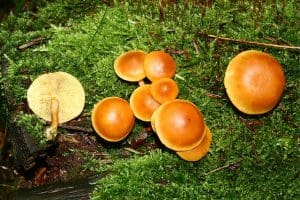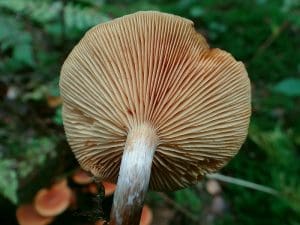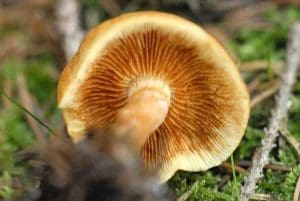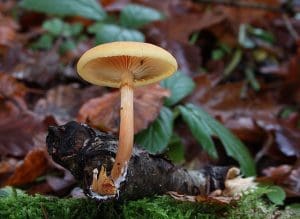Common Rustgill / Summer / Autumn / Winter / Inedible
Enter the intriguing world of the Common Rustgill, scientifically known as Gymnopilus Penetrans, as we explore the enigmatic qualities of this inedible mushroom.
In this blog post, we embark on a journey to discover the unique characteristics and cautionary nature of the Common Rustgill. With its rusty-brown caps and gilled underside, this mushroom exudes a rustic beauty that captures the curiosity of mushroom enthusiasts and nature lovers alike.
Join us as we delve into the habitat, identification, and potential risks associated with Gymnopilus Penetrans, ensuring our understanding of its inedibility and potential toxic properties.
While historically used for cultural purposes in some regions, it is crucial to note the potential adverse effects that can occur when consuming or mishandling this species. Let us appreciate the rustic fascination of the Common Rustgill from a safe distance, acknowledging its inedibility and emphasizing the importance of responsible mushroom identification and consumption.
Scientific Name
Gymnopilus Penetrans
Common Names
Common Rustgill
Family
Strophariaceae
Habitat
Nearly always found in coniferous woodlands, they feed on dead material and appear on stumps, logs, woodchip and cones, they typically grow in large clumps.
Description
A common mushroom with quite a long season, there are question marks arounds its edibility. Most guides list them as inedible while some class them as poisonous, so not one that we would recommend for the kitchen.
Identifying Features:
Cap:
Convex when young they flatten out with age. They are orange/yellow to brown in colour, tending to be darker towards the centre. The caps are covered with very fine silk/velvet like hairs.

Stem:
Yellowish to brown in colour they are covered in off white fibres that run down the stem.

Gills:
The gills are crowded and adnate, yellowish when young, the rust coloured spores darken the gills as they age.

Smell:
Slightly fruity.
Spores:
Rusty, orange to brown.
Known hazards
They are very bitter tasting and due to the question marks around edibility its best avoided. Several species in the genus Gymnopilus are known to be seriously poisonous, and there is evidence that rustgills from certain parts of the world contain hallucinogenic substances such as psilocybin.
Potential lookalikes
The Spectacular Rustgill (Gymnopilus Junonius) can look similar but this has a scaly cap and a ring on its stem.
The Golden Bootleg (Phaeolepiota Aurea) can also look similar but this is a very rare mushroom and it has a yellowish spore print.
Extra Notes
The name derives from ancient Greek, gymn meaning naked and pilus meaning cap, hence naked or bald cap. Penetrans means penetrating.







Leave a Reply
You must be logged in to post a comment.